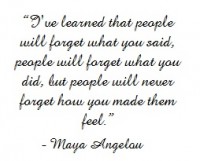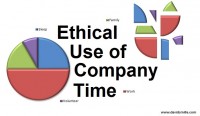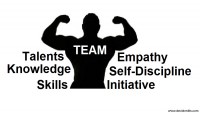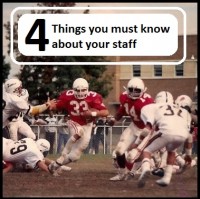(Extract)
There seems to be a consensus as to the advantages and disadvantages of team or group structured activities. Almost every list or article that we read, we find that participation and conflict are among the top disadvantages. However, not everyone agrees that the disadvantages outweigh the potential that team or group activities can present. Additionally, and more specifically, the decision-making process can be greatly affected by many factors related with these dynamics.
Conflict is one of those things that seem to follow us throughout life where ever we go, and is thus not absent from group dynamics. The FAA, as well as many others who have weighed in on the topic, agrees that conflict is one of the greatest challenges that teams or work groups face (Team Performance, 2014). Most often, this is a trust issue. However, it can also stem from personality clashes, power struggles, or even from those who purely have an aversion to group related activities. In all of these situations, the decision-making process can be exceedingly difficult. In the midst of conflict it is often complicated to even determine the root cause, due to the lack of trust within the group. This conflict creates a barrier that will prevent even the similarities of thought to be agreed upon. …
On the other hand, participation, although it can also be found on most lists, has a few unusual and interesting outcomes. Some believe that the participation or lack of participation can play different roles and have completely different impacts within the group. The negative aspect is often generated by unequal participant contribution in the activities and deliverables assigned. However, participation is seen in a positive light within most groups who are faced with more complex or difficult tasks. I have found that some, who might be bored otherwise, are more engaged when the stakes are higher or when the complexity is more challenging or thought provoking. In these cases, it is important that each member be assessed for their skills and assigned relative work assignments. … As would be imagined, decision-making in these cases, regardless of the number of participants, can tend to take longer since a consensus is often required.
One thing is certain, and that is that no one person has all the answers. If groups are able to clear the hurdles and challenges of group dynamics, most would agree that there is more knowledge, experience, and resource hours available in any group activity. One thing that we often stress is the importance of focusing on the purpose and the goal. Doing so without involving anyone’s personal agenda will most often result in the most successful decision for the organization.
References
Kreitner, R., & Kinicki, A. (2012). ORGANIZATIONAL BEHAVIOR 10th EDITION. McGraw-Hill/Irwin.
Some Benefits of Teamwork – Defining Teams and Teamwork. (n.d.). Retrieved February 8, 2014, from https://www.boundless.com/management/groups-teams-and-teamwork/defining-teams-and-teamwork/some-benefits-of-teamwork/
Teams Have Many Advantages. (n.d.). Retrieved February 8, 2014, from http://www.ncrel.org/sdrs/areas/issues/educatrs/leadrshp/le2advan.htm
Team Performance. (n.d.). Retrieved February 8, 2014, from http://www.hf.faa.gov/webtraining/teamperform/Team008.htm
The Advantages & Disadvantages of Teams in the Workplace | Chron.com. (n.d.). Retrieved February 8, 2014, from http://smallbusiness.chron.com/advantages-disadvantages-teams-workplace-21669.html
The Disadvantages of Teamwork in the Workplace | Chron.com. (n.d.). Retrieved February 8, 2014, from http://smallbusiness.chron.com/disadvantages-teamwork-workplace-1937.html






